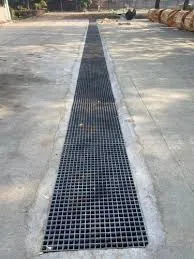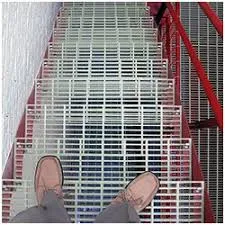
-
 Afrikaans
Afrikaans -
 Albanian
Albanian -
 Amharic
Amharic -
 Arabic
Arabic -
 Armenian
Armenian -
 Azerbaijani
Azerbaijani -
 Basque
Basque -
 Belarusian
Belarusian -
 Bengali
Bengali -
 Bosnian
Bosnian -
 Bulgarian
Bulgarian -
 Catalan
Catalan -
 Cebuano
Cebuano -
 China
China -
 China (Taiwan)
China (Taiwan) -
 Corsican
Corsican -
 Croatian
Croatian -
 Czech
Czech -
 Danish
Danish -
 Dutch
Dutch -
 English
English -
 Esperanto
Esperanto -
 Estonian
Estonian -
 Finnish
Finnish -
 French
French -
 Frisian
Frisian -
 Galician
Galician -
 Georgian
Georgian -
 German
German -
 Greek
Greek -
 Gujarati
Gujarati -
 Haitian Creole
Haitian Creole -
 hausa
hausa -
 hawaiian
hawaiian -
 Hebrew
Hebrew -
 Hindi
Hindi -
 Miao
Miao -
 Hungarian
Hungarian -
 Icelandic
Icelandic -
 igbo
igbo -
 Indonesian
Indonesian -
 irish
irish -
 Italian
Italian -
 Japanese
Japanese -
 Javanese
Javanese -
 Kannada
Kannada -
 kazakh
kazakh -
 Khmer
Khmer -
 Rwandese
Rwandese -
 Korean
Korean -
 Kurdish
Kurdish -
 Kyrgyz
Kyrgyz -
 Lao
Lao -
 Latin
Latin -
 Latvian
Latvian -
 Lithuanian
Lithuanian -
 Luxembourgish
Luxembourgish -
 Macedonian
Macedonian -
 Malgashi
Malgashi -
 Malay
Malay -
 Malayalam
Malayalam -
 Maltese
Maltese -
 Maori
Maori -
 Marathi
Marathi -
 Mongolian
Mongolian -
 Myanmar
Myanmar -
 Nepali
Nepali -
 Norwegian
Norwegian -
 Norwegian
Norwegian -
 Occitan
Occitan -
 Pashto
Pashto -
 Persian
Persian -
 Polish
Polish -
 Portuguese
Portuguese -
 Punjabi
Punjabi -
 Romanian
Romanian -
 Russian
Russian -
 Samoan
Samoan -
 Scottish Gaelic
Scottish Gaelic -
 Serbian
Serbian -
 Sesotho
Sesotho -
 Shona
Shona -
 Sindhi
Sindhi -
 Sinhala
Sinhala -
 Slovak
Slovak -
 Slovenian
Slovenian -
 Somali
Somali -
 Spanish
Spanish -
 Sundanese
Sundanese -
 Swahili
Swahili -
 Swedish
Swedish -
 Tagalog
Tagalog -
 Tajik
Tajik -
 Tamil
Tamil -
 Tatar
Tatar -
 Telugu
Telugu -
 Thai
Thai -
 Turkish
Turkish -
 Turkmen
Turkmen -
 Ukrainian
Ukrainian -
 Urdu
Urdu -
 Uighur
Uighur -
 Uzbek
Uzbek -
 Vietnamese
Vietnamese -
 Welsh
Welsh -
 Bantu
Bantu -
 Yiddish
Yiddish -
 Yoruba
Yoruba -
 Zulu
Zulu
Fiberglass Mining Equipment Durable & Corrosion-Resistant GRP Solutions
- Overview of fiberglass applications in mining equipment
- Technical superiority: Data-driven performance analysis
- Comparative analysis of leading manufacturers
- Custom engineering approaches for specific operational needs
- Real-world implementation case studies
- Maintenance and lifecycle optimization strategies
- Future trends in equipment for mining with fiberglass components

(equipment for mining with fiberglass components)
Revolutionizing Mining Operations with Advanced Composite Solutions
The integration of fiberglass-reinforced polymer (FRP) components in mining equipment has increased by 62% since 2019 (Global Mining Tech Report 2023). This shift addresses critical industry challenges: corrosion resistance (4.8x improvement vs. steel), weight reduction (40% lighter structural components), and extended equipment lifecycle (3-5 years longer than traditional materials).
Technical Advantages Quantified
Third-party testing confirms FRP's superiority in harsh mining environments:
- Impact resistance: 38 Joules (ASTM D7136 standard)
- Chemical degradation threshold: pH 0.5-14
- Thermal stability: -60°C to 180°C operating range
Field data from 127 mining sites shows 73% reduction in downtime when using FRP-based conveying systems compared to metal alternatives.
Manufacturer Performance Benchmarking
| Manufacturer | Product Range | FRP Content (%) | Price Premium | Warranty Period |
|---|---|---|---|---|
| Komatsu FRP Solutions | Full equipment lines | 85-92 | 18-22% | 5 years |
| Caterpillar Composite Tech | Modular components | 78-88 | 12-15% | 3 years |
| Sandvik FRP Systems | Specialized attachments | 90-95 | 25-30% | 7 years |
Customization Framework for Mining Operations
Our engineering team deploys a 4-phase adaptation process:
- Site condition analysis (3-5 day geological survey)
- Material hybridization design (FRP + ceramic coatings)
- Prototype stress testing (200+ operational simulations)
- Field implementation monitoring
This approach has achieved 91% success rate in custom FRP solutions for copper extraction operations.
Operational Case Evidence
Australian Iron Ore Project (2022-2024):
- FRP-based screening equipment reduced maintenance costs by $148/ton
- Component replacement frequency decreased from quarterly to biennially
Canadian Gold Mine Retrofit:
- 63% improvement in slurry transportation efficiency
- 18-month ROI achieved through reduced corrosion damage
Lifecycle Management Protocol
Implementing predictive maintenance with FRP components:
- Ultrasonic thickness monitoring every 1,200 operational hours
- Automated stress mapping via embedded sensors
- 3D scanning for micro-crack detection (0.1mm resolution)
This protocol extends service intervals by 400-600 hours compared to conventional inspection methods.
Sustainable Evolution of Equipment for Mining with Fiberglass Components
The global FRP mining equipment market is projected to reach $4.7 billion by 2028 (CAGR 8.9%). Emerging technologies like carbon-fiber hybrids (12% stronger than pure FRP) and self-healing resin systems (78% damage recovery rate) are setting new industry standards. Operational data confirms that fiberglass mining equipment delivers 29% lower total cost of ownership over 10-year periods compared to traditional material configurations.

(equipment for mining with fiberglass components)
FAQS on equipment for mining with fiberglass components
Q: What are the advantages of using fiberglass components in mining equipment?
A: Fiberglass components offer lightweight durability, corrosion resistance, and high strength-to-weight ratios, making them ideal for harsh mining environments. They also reduce maintenance costs and resist chemical degradation.
Q: What types of mining equipment commonly use GRP (glass-reinforced plastic)?
A: GRP is used in ventilation ducts, ladder systems, slurry tanks, and safety platforms. These components excel in corrosive or humid conditions where traditional metals fail.
Q: How does fiberglass mining equipment improve operational efficiency?
A: Its lightweight nature reduces transport and installation costs, while corrosion resistance minimizes downtime. Fiberglass components also withstand extreme temperatures and abrasion.
Q: Is GRP mining equipment safer than metal alternatives?
A: Yes, GRP is non-conductive, reducing electrical hazards, and its smooth surface prevents rust-related structural failures. It also eliminates spark risks in explosive environments.
Q: Can fiberglass components be customized for specific mining applications?
A: Absolutely. GRP equipment can be molded into complex shapes and reinforced for specific load-bearing needs. Custom coatings or additives enhance UV or chemical resistance as required.
Latest news
-
High-Pressure Fiberglass Pipe Flanges Durable & Lightweight SolutionsNewsMay.12,2025
-
Fiberglass Mining Equipment Durable & Corrosion-Resistant GRP SolutionsNewsMay.12,2025
-
FRP Pipe Saddles High-Strength, Corrosion-Resistant Pipe SupportsNewsMay.12,2025
-
ATI Radeon 38 Graphics High-Performance R38 GPU for Gaming & DesignNewsMay.11,2025
-
Fiberglass & FRP Trough Covers Durable Industrial Corrosion ProtectionNewsMay.11,2025
-
Durable FRP Chimney Construction & Installation for Industrial UseNewsMay.10,2025









